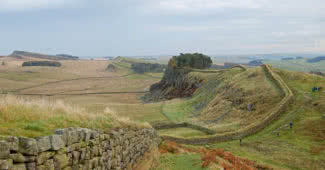Geoglyphs are large artworks constructed by ancient civilizations on grounds. The actual size and structure of many of geoglyphs only becomes clear from air. Still the modern world is unaware about actual purpose of geoglyphs and about their creators. Followings are 5 most mysterious geoglyphs around the world.
7 Cerne Abbas Giant, Dorset, England
Cerna abbas is the largest hill figure in England, located in Dorset. This mysterious geoglyph represent a large naked men wielding a club. The date of creation and identity still remain a mystery. There is also a rectangular Eargthwork enclosure located above of Cerne Abbas Giant, known as trendle, Just like the giant form it’s identity is still unclear.
Cerne Abbas giant is about 180 feet tall and having a width of 167 feet. It was carved out using white chalk. Many theories surrounded about the identity of this geoglyph. One common explanationis that it is ancient symbol of spirituality. There is on clear explanation about the date of construction of Cerne Abbas Giant. It was first recorded on accounts of St. Mary’s church located in Cerne Abbas village.
Top 10 amazing ancient walls around the world
4 Paracas Candelabra, Peru
It is a mysterious and giant ground drawing etched on the sloping hill at Pisco bay in Peru. The geoglyph shows resemblance with candlestick and so it is called as ‘The candelabra of Andes’. It was created by cut the soil into the depth of two feet using stones.
It is 595 feet tall and can seen from 12 miles out to the sea. So many local people believe that it could be sign of sailors. But the real purpose of this geoglyph remains unknown. Archaeologists believed that paracas cendelabra dated to 200 BC. Because pottery found near this site has been carbon dated to 200 B.C.
3 Atacama Giant, Atacama Desert, Chile
Atacama giant is the largest anthropomorphic geoglyph in the world with 390 feet height. The figure has a crown on his head and boots on his feet. The site can be found in Atacama desert of Chile. Scientists believed that the geogplyph represent God of local inhabitant between AD 1000 and 1400. It was created by scraping away the top layer of desert floor using dark stones. It is said to be this large human figure used as an astronomical calender during middle ages for determining different seasons depending on it’s alignment with Moon.
2 Marree Man, Marree, South Australia
Marree man in South Australia is the largest geoglyph in the world with height of 4.2 kilometers. It represent a man holding either stick or boomerang. It was created by digging lines on harsh land using material like rock. The outline of the figure have depth of 8-12 inches. The actual purpose and origin of the geoglyph still remain a mystery. It was discovered by charter pilot Trevor Wright from air on 26th June 1998.
After the discovery of Marree man number of anonymous press releases quoted that the geogplyh was creation of Americans. But it has been suspected that those press releases misleading ones. Another set of clues including a jar with American flag, satellite photo of Marree man found near the site also sounds American authorship. At same time other group of people believed that it was a creation of a late Australian artist.
Related Articles
1 Nazca Lines, Nazca desert, Peru
Nazca lines features hundreds of geoglyphs ranging from simple lines to very complex figures. The site is situated in Nazca desert in Peru and recognized by UNESCO as a world heritage site in 1994. The site include many animal and plant figures such as monkeys, spiders, humming birds, killer whales, sharks,lizards and phytomorphic shapes like flowers and trees. The animal and plant figures comes under biomorph category and figures on plain comes under geogplyhs.
There are 900 geogphys in total within the site includes straight lines, triangles, circles and spirals. These lines are created by brushing away the pebbles and exposing the white colored sand under the surface of desert. Scientists believed that Nazca lines were created between 400 and 650 AD by people from Nazca culture. Nazca lines are still persevered because of isolation of the site.
The actual purpose of Nazca lines remains unclear. There are many theories speculated over the purpose of Nazca lines. Archaeologists believed that Nazca lines are intended to point places on distant horizon such as Sun and other celestial bodies.




